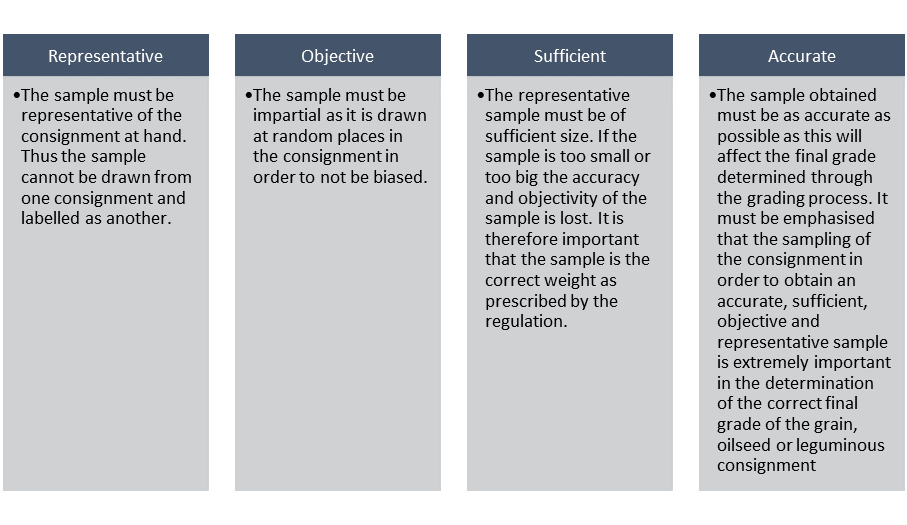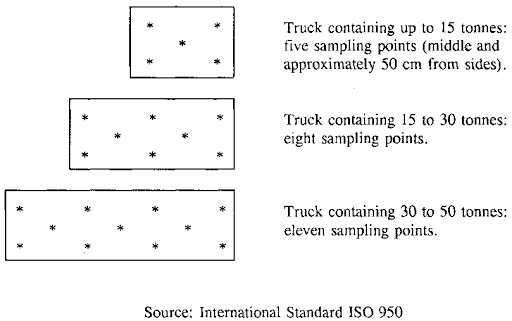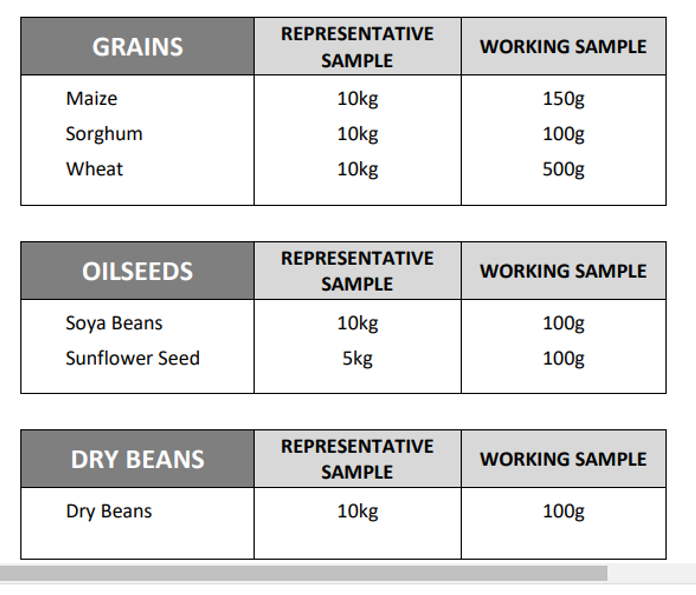Determining the quality of a consignment of grain, oilseed or leguminous seed is vital for decision making on all levels of the industry. These decisions will affect the immediate parties involved in the purchase and sale agreement as well as other parties further down in the distribution channel.
Quality aspects in the operational levels of manufacturing give indication whether the raw commodity can be used to produce the final product which must conform to certain quality and nutritional values. An example would be a consignment of maize procured to manufacture maize meal. If the quality of the consignment does not conform to the requirements for the purpose of use the consignment will be rejected and forced to follow a new route which will affect a new chain of event in terms of logistics and actions.
From a financial perspective, the decision will affect the price that the purchaser will pay and the corresponding price the producer of the consignment will receive. The logic rings clear that the higher the quality, the higher the price of the consignment.
As the first step in the grading process, sampling’s primary function is to enable a grader to determine the quality of the consignment of grain, oilseed or leguminous seed. Through sampling, a representative sample is obtained from the consignment which will be analysed to determine the quality. In the context of quality, sampling enables the grader to determine the presence of unwanted materials in the consignment such as glass, metal, coal, dung and stones. Insect content present in the consignment can also be detected. Quality further entails the determination of the moisture content of the commodity for either storage or processing of the grain, oilseed of leguminous seed. The consignment must also be inspected for poisonous or noxious seeds done through the analysis of the representative sample obtained through sampling.
A factor sharing importance of quality with regards to sampling is price. With the quality known a price can be allocated to the commodity usually per ton. The logic is simplistic in that the higher the quality the higher the price. Sampling can also be implemented as verifying factor between two parties of a contract. Verifying through sampling the consignment’s quality can be determined ensuring that the 22 commodities does comply with the contractual requirements and thus binding the price that needs to be paid for the delivery. Thus, to summarise the need of sampling, it produces a representative sample which will be analysed to determine the quality and the price of the consignment. Furthermore, sampling functions as a verifier based on contractual essentialia and naturalia.
What Constitutes a Representative Sample?
The primary function of sampling is to obtain a representative sample from the consignment in order to determine the quality.
It must be emphasised that sampling is not a stand-alone procedure but is an integral part of the entire grading process. If the sampling procedure is done incorrectly the final grade will correspondingly be incorrect.
Determining the correct grade of the grains, oilseeds or leguminous seeds each step of the grading process must be based on strict accuracy. The best grader in the world can only grade what he or she has in front of him or her on the grading table.
Sample Requirements or Characteristics
The first step of utmost accuracy is the sampling process. Basic characteristics of sampling can be listed as follows:

Representative Sample
A representative sample obtained through the sampling process must conform to or represent the consignment at hand. This means that the representative sample must be mass per mass made up of the same composition as that of the consignment from which it was drawn.
To better understand this concept, let us define a consignment: "It is a quantity of grain, oil seed or dry beans of the same class, which belongs to the same owner, delivered at any one time under cover of the same consignment note, delivery note or receipt note or delivered by the same vehicle or bulk container, or loaded from the same bin of a grain elevator or from a ship’s hold; or In the case where a quantity referred to in above mentioned paragraph, is subdivided into different grades - each such quality of the different grades."
The consignment consists of all material present in the container including the commodity and all unwanted material (glass, metal, coal, dung and poisonous seeds) which must be present in the representative sample drawn from that consignment.
Certain principles of representative sampling must be observed:
- The consignment should be divided into primary units of equal size or status, which may be sampled. For bagged grain, each bag may be regarded as a primary unit. For bulk grain, the primary unit may be expressed in terms of weight, if the grain is being moved, or volume, when it is static - as in a truck or bin.
- All primary units should have an equal opportunity of being sampled. This is possible only during the construction or dismantling of a stack, the loading or offloading of a truck, or when bulk grain is being moved.
- The method should select, without bias, a representative number of primary units from the consignment.

Working Sample
In practice, it is necessary to compromise between what is theoretically attainable and the natural desire to obtain results of analyses as quickly as possible. Providing the associated margins of error are recognised and accepted, it is generally suggested that working samples should be used for the determination of common defects such as insect damage, broken grains and discoloured grains.
The various representative sample sizes for grains, oilseeds and dry beans and their working sample sizes are tabulated below. These weights are based on the regulations governing the grading processes and procedures of South Africa.

Click here to view a video that explains sampling and sample preparation the key to reliable analysis.